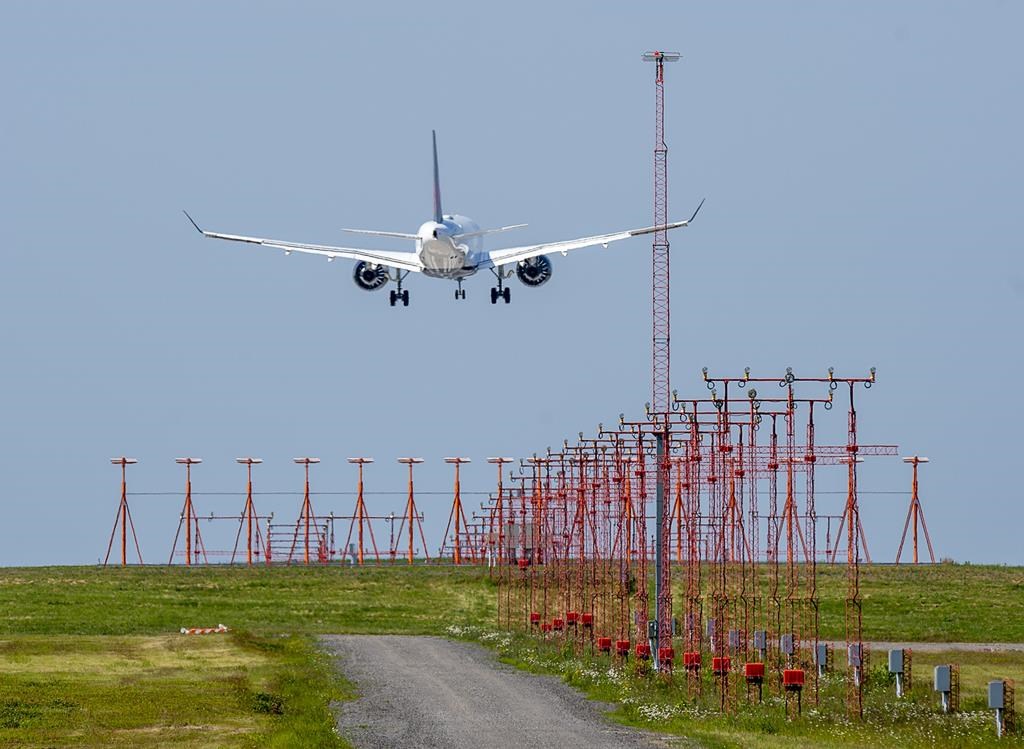‘Bizarre’ that Canada lagging on sustainable aviation: Airbus Canada CEO

Posted Oct 16, 2023 06:15:14 PM.
MONTREAL — Canada possesses the key factors to place it at the cutting edge of sustainable jet fuel — making it all the more “bizarre” that the country lags behind the United States and Europe in the race toward greener skies, says Airbus Canada’s chief executive.
Benoît Schultz said Canada’s long history of resource development, renewable energy, agriculture and aircraft manufacturing should put it in the pilot’s seat on developments around sustainable aviation fuel, also known as SAF.
“In a country like Canada, with the natural resources that it has, with the competences in the industry that it has, with the many players of the industry … it would be really bizarre in my view if we couldn’t make sense out of the sustainable aviation fuel roadmap,” Schultz said in a video chat from Toronto.
However, Canada has yet to commercially produce a drop of the stuff, often derived from used cooking oils, animal fats or organic waste.
Meanwhile, the U.S. has embarked on an ambitious incentives program and the European Union has set a timeline for green fuel thresholds — at least two per cent of the bloc’s jet fuel must be sustainable by 2025, climbing to six per cent in 2030, 20 per cent in 2035 and 70 per cent in 2050.
New Airbus planes can handle up to 50 per cent sustainable fuel, with the other half coming from old-fashioned kerosene-based fuel, Schultz said. The goal of the France-based giant is to be 100 per cent SAF-compatible by 2030.
“It’s not a major deal, technically speaking,” Schultz said of the transition. “The real challenge is producing sustainable aviation fuel in volume.”
Production rates for SAF amount to roughly one per cent of global jet fuel demand. The green alternative, which shaves off about 80 per cent of a plane’s emissions, costs at least four times more than the petroleum-derived kind.
The prohibitive cost of sustainable fuel — along with the rising urgency to deploy it amid stricter government rules and a heating planet — mean the aviation industry faces an “existential threat” if it does not work to decarbonize quickly, said Deborah Flint, who heads the Greater Toronto Airports Authority.
“It’s pretty jarring,” she told attendees at a recent panel on clean aerospace at the Canadian Club in Toronto earlier this month.
“The threats of reducing the (aerospace) business or making the business too expensive are very real and imminent for us.”
Big players such as Air Canada are on board with the drive toward greater fuel efficiency, buying a raft of new cost-saving planes such as the Boeing 787 Dreamliner and 737 Max and the Airbus A220 (formerly the Bombardier-conceived C Series) — still assembled largely in Mirabel, Que.
In April, it announced the purchase of 9.5 million litres of SAF from Finland-based oil refiner Neste. But the amount totalled less than 0.2 per cent of the 5.71 billion litres of fuel Air Canada consumed in 2019.
“If you took the entire supply of sustainable aviation fuel that is available globally, in 2021 Air Canada would have flown nine days of its schedule,” said Valerie Durand, head of corporate sustainability at Air Canada.
“There is hope, because in 2022 it was 41. But that gives you an idea of the scale of what we’re dealing with right now.”
New planes consume up to 20 per cent less fuel than the models they replace, but growth in activity has historically outpaced efficiency upgrades, according to the International Energy Agency.
Meanwhile, electric or hydrogen-power planes — particularly for long-haul flights, which demand much more energy — remain farther on the horizon, a reality that makes the aviation sector “really difficult” to decarbonize, Flint said. Batteries weigh far too much to install on long-range jetliners. And a similar problem faces gaseous hydrogen, whose low energy density requires massive on-board tanks — though optimists foresee H2-propelled short-range planes entering into service as early as 2035.
The aviation industry has set a goal of net-zero emissions by 2050 through bodies such as the International Air Transport Association trade group and the International Civil Aviation Organization, a United Nations agency.
It is calling for more international co-ordination to establish standards and fund improvements on SAF as well as technology around electric batteries and green hydrogen — gas produced using renewable energy.
Earlier this year, the federal government pledged $350 million to support the decarbonization of the aerospace sector. The fund’s goal is to foster a national network overseen by an industry-led board that backs collaborative research and development projects ranging from sustainable fuel to aircraft architecture.
“We have a long way to go,” said Suzanne Kearns, founding director of Ontario’s Waterloo Institute for Sustainable Aeronautics.
A key hurdle is ensuring that the full lifecycle of sustainable aviation lives up to its name, from farm to feedstock to fuel.
“The fear is that the production, transportation — basically just the implementation — of SAF in aviation would, throughout the lifecycle, create more emissions than are saved,” Kearns said.
Another risk? “Taking food out of people’s mouths to put fuel into aircraft.”
Boeing chief sustainability officer Chris Raymond pointed to Alberta’s oil and gas sector for its untapped potential to churn out green jet fuel.
“You have to bring that industry with aviation, with finance and with policymakers to find the policy that will let this industry grow without it looking like a threat to anybody,” he said in an interview.
Boeing executives also highlighted opportunities in hydroelectricity-heavy provinces such as Quebec and British Columbia to create so-called liquid-to-power SAF. Eschewing plant waste, the synthetic gas is created solely via renewables by extracting hydrogen from water, carbon dioxide from air and electricity from renewable sources and then refining them.
Kearns cited “roadmaps to decarbonization” laid out by the National Research Council and the Canadian Council for Sustainable Aviation Fuels as reasons for hope.
Even little step can add up.
“For example, using electric tow trucks instead of those that are run off traditional fuels, or taxiing on just one engine,” she said.
“But there’s so much work that still needs to be done in this space.”
This report by The Canadian Press was first published Oct. 16, 2023.
Companies in this story: (TSX:AC, TSX:BBD.B)
Christopher Reynolds, The Canadian Press
<!– Photo: 2023101612108-652d5ff51ac5ceca890fdda9jpeg.jpg, Caption:
–>








